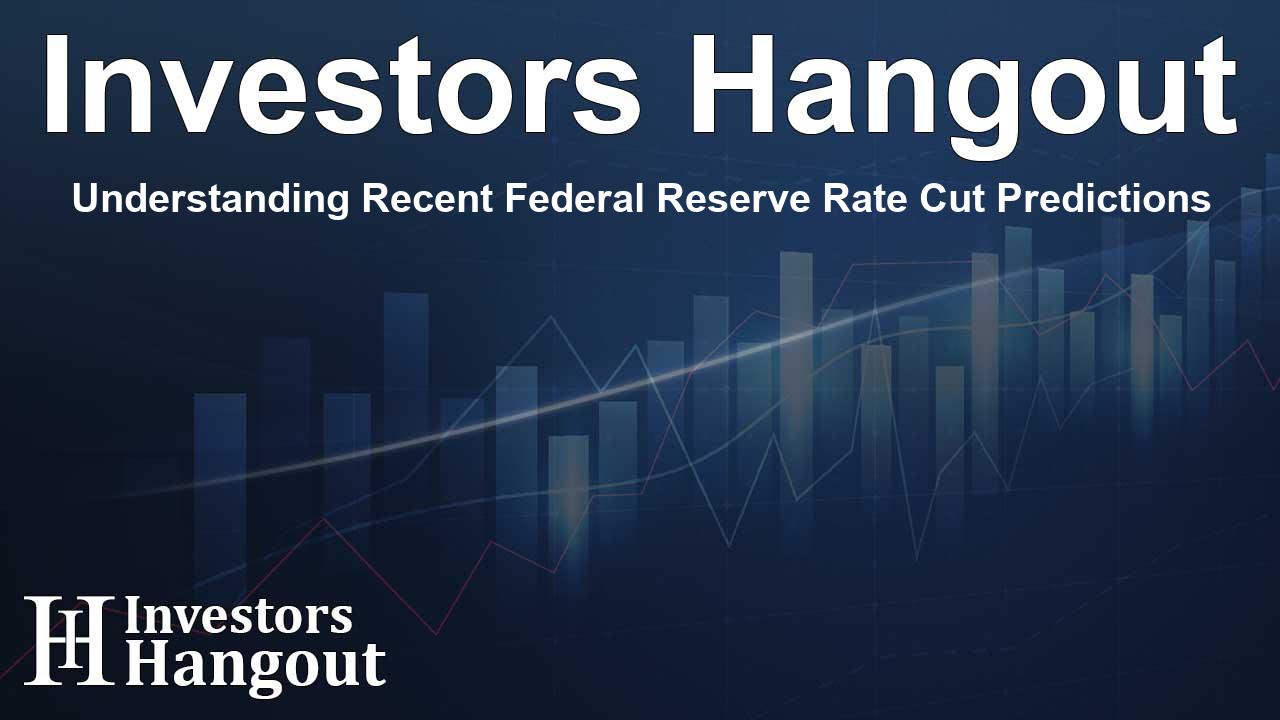Understanding Recent Federal Reserve Rate Cut Predictions

Insights into the Federal Reserve Rate Cut Speculations
The Federal Reserve is poised to make a significant decision regarding the federal funds rate, potentially making adjustments for the first time in several years at the next Federal Open Market Committee meeting. As this pivotal meeting approaches, discussions and analyses have ramped up, generating various perspectives regarding the potential size of the rate cut.
Rate Cut Options: 25 or 50 Basis Points?
Market observers are currently evaluating two primary options for the upcoming cut, either a modest 25-basis-point reduction or a more substantial 50-basis-point cut. Recent indications show that investors are showing a preference for the more aggressive option, signaling a lean towards a 50-basis-point cut.
Market Sentiment Shifts Toward a Larger Cut
As indicated by the CME Group’s FedWatch tool, there is now a strong market sentiment leaning towards a 50-basis-point cut. The probabilities have increased significantly, showing a rise to 65% from just 30% within a week. This shift is echoed by betting markets, which also reflect enhanced confidence in a larger cut being implemented.
Much of this reassessment has been influenced by recent communications from Federal Reserve officials, combined with various media reports that have surfaced leading up to the FOMC blackout period. Notably, analysts and reporters have voicing opinions that favor the likelihood of a 50-basis-point cut over the previous expectation of a more conservative reduction.
Influential Opinions from Analysts
Reputable journalists and analysts, such as Nick Timiraos from the Wall Street Journal and Bill Dudley, a former president of the Federal Reserve Bank of New York, have published content that contributes to this mounting confidence. Dudley argues that the rationale for a larger cut is compelling, as current interest rates are positioned excessively high compared to the Fed’s dual mandate, which seeks to optimize both price stability and employment metrics.
Contrasting Forecasts from Major Institutions
While some speculate about a 50-basis-point cut, leading financial institutions like Bank of America and Goldman Sachs are taking a more conservative stance. These institutions predict a 25-basis-point decrease based on various indicators and recent trends in the economy. Bank of America strategist Mark Cabana articulates that the Fed's current environment is characterized by uncertainty, which necessitates caution in terms of policy adjustments.
Moreover, both Cabana and Goldman Sachs economist David Mericle suggest that any cuts will be gradual, with expectations of additional reductions in the future as warranted by ongoing data analysis. Mericle especially points out that the typical Fed practice involves substantial cuts only during notable economic disruptions.
The Balance of Economic Indicators
As the marketplace grapples with these predictions, many investors are acutely aware of the implications of a rate cut on various sectors. A significant cut could potentially invigorate market activity, increasing investor risk appetite, and influencing movements in gold and other commodities. The focus now remains on how the Fed will read the current economic signals and adjust their policies accordingly.
Frequently Asked Questions
What factors influence the Federal Reserve's decision on rate cuts?
The Federal Reserve considers various economic indicators such as inflation, employment rates, and overall economic growth when deciding on rate cuts.
Why are there different predictions regarding the rate cut?
Different analysts rely on various economic data and trends, leading to differing interpretations regarding the size and timing of potential rate cuts.
What would a 50-basis-point cut mean for the economy?
A 50-basis-point cut could stimulate economic activity by reducing borrowing costs, possibly leading to increased investment and consumer spending.
How often does the Federal Reserve adjust interest rates?
The Federal Reserve meets regularly throughout the year to assess economic conditions and may adjust interest rates as needed based on their assessments.
What is the significance of the FOMC meetings?
The Federal Open Market Committee (FOMC) meetings are crucial as they set the tone for U.S. monetary policy, influencing rates, inflation, and overall economic health.
About The Author
Contact Henry Turner privately here. Or send an email with ATTN: Henry Turner as the subject to contact@investorshangout.com.
About Investors Hangout
Investors Hangout is a leading online stock forum for financial discussion and learning, offering a wide range of free tools and resources. It draws in traders of all levels, who exchange market knowledge, investigate trading tactics, and keep an eye on industry developments in real time. Featuring financial articles, stock message boards, quotes, charts, company profiles, and live news updates. Through cooperative learning and a wealth of informational resources, it helps users from novices creating their first portfolios to experts honing their techniques. Join Investors Hangout today: https://investorshangout.com/
The content of this article is based on factual, publicly available information and does not represent legal, financial, or investment advice. Investors Hangout does not offer financial advice, and the author is not a licensed financial advisor. Consult a qualified advisor before making any financial or investment decisions based on this article. This article should not be considered advice to purchase, sell, or hold any securities or other investments. If any of the material provided here is inaccurate, please contact us for corrections.
